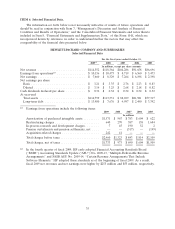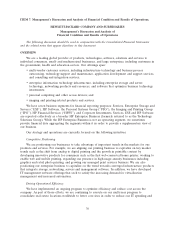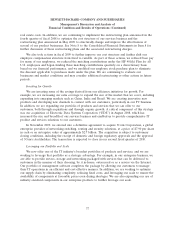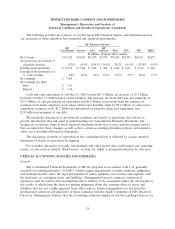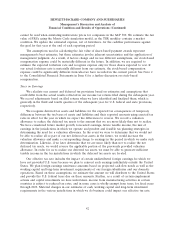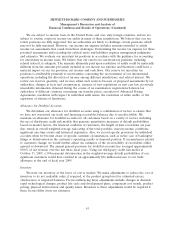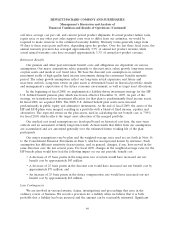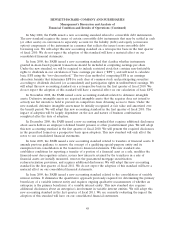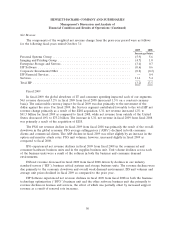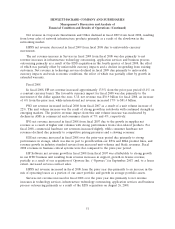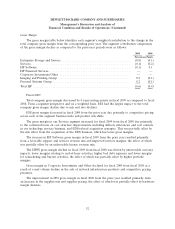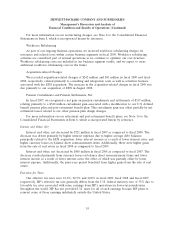HP 2009 Annual Report Download - page 52
Download and view the complete annual report
Please find page 52 of the 2009 HP annual report below. You can navigate through the pages in the report by either clicking on the pages listed below, or by using the keyword search tool below to find specific information within the annual report.HEWLETT-PACKARD COMPANY AND SUBSIDIARIES
Management’s Discussion and Analysis of
Financial Condition and Results of Operations (Continued)
We measure fair value using the framework established by the FASB accounting guidance for fair
value measurements and disclosures. This framework requires fair value to be determined based on the
exchange price that would be received for an asset or paid to transfer a liability (an exit price) in the
principal or most advantageous market for the asset or liability in an orderly transaction between
market participants.
The valuation techniques are based upon observable and unobservable inputs. Observable or
market inputs reflect market data obtained from independent sources. Unobservable inputs require
management to make certain assumptions and judgments based on the best information available.
Observable inputs are the preferred source of values. These two types of inputs create the following
fair value hierarchy:
Level 1—Quoted prices (unadjusted) for identical instruments in active markets.
Level 2—Quoted prices for similar instruments in active markets, quoted prices for identical or
similar instruments in markets that are not active, and model-based valuation techniques for which all
significant assumptions are observable in the market or can be corroborated by observable market data
for substantially the full term of the assets or liabilities.
Level 3—Prices or valuations that require management inputs that are both significant to the fair
value measurement and unobservable.
A description of the valuation methodologies we use to measure our financial assets and liabilities
at fair value is provided below.
Cash Equivalents and Investments: We hold time deposits, money market funds, commercial paper,
other debt securities primarily consisting of corporate and foreign government notes and bonds, and
common stock and equivalents. In general, and where applicable, we use quoted prices in active
markets for identical assets to determine fair value. If quoted prices in active markets for identical
assets are not available to determine fair value, then we use quoted prices for similar assets and
liabilities or inputs that are observable either directly or indirectly. If quoted prices for identical or
similar assets are not available, we use internally developed valuation models, whose inputs include bid
prices, and third party valuations utilizing underlying asset assumptions.
Derivative Instruments: As discussed in Note 10 to the Consolidated Financial Statements in
Item 8, we mainly hold non-speculative forwards, swaps and options to hedge certain foreign currency
and interest rate exposures. When active market quotes are not available, we use industry standard
valuation models. Where applicable, these models project future cash flows and discount the future
amounts to a present value using market-based observable inputs including interest rate curves, credit
risk, foreign exchange rates, and forward and spot prices for currencies. In certain cases, market-based
observable inputs are not available and, in those cases, we use management judgment to develop
assumptions which are used to determine fair value.
Warranty Provision
We provide for the estimated cost of product warranties at the time we recognize revenue. We
evaluate our warranty obligations on a product group basis. Our standard product warranty terms
generally include post-sales support and repairs or replacement of a product at no additional charge for
a specified period of time. While we engage in extensive product quality programs and processes,
including actively monitoring and evaluating the quality of our component suppliers, we base our
estimated warranty obligation upon warranty terms, ongoing product failure rates, repair costs, product
45


